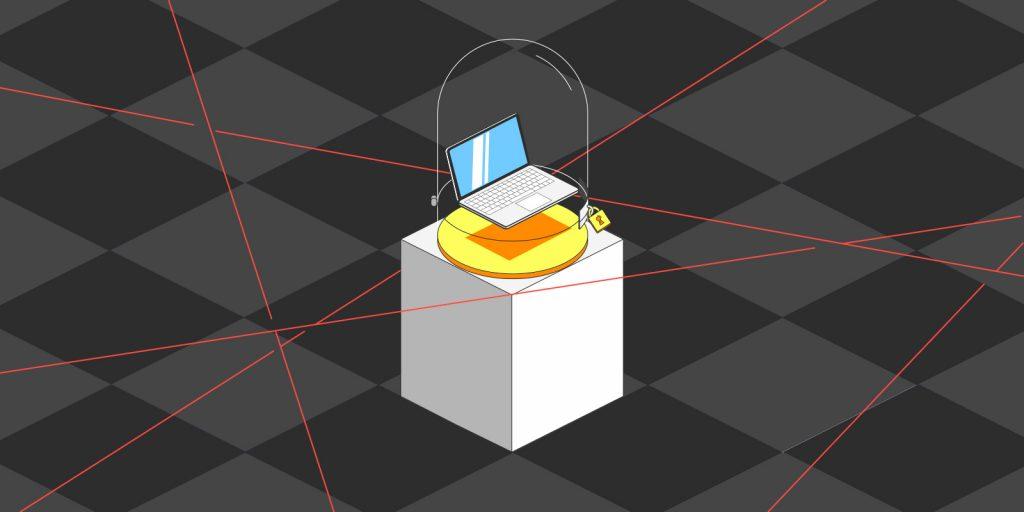To prevent brute force attacks, implement strong passwords and lockout policies.
Understanding Brute Force Attacks
Brute force attacks refer to the malicious attempt of gaining unauthorized access to a system or account through the systematic trial of various combinations of usernames and passwords. Often targeting websites or online platforms, these attacks can pose significant risks to individuals, organizations, and their data.
- Brute force attacks aim to exploit weak credentials or passwords to gain entry,
- Making it crucial to adopt preventive measures.
- By deploying strong, unique passwords, enabling account lockouts, and implementing multi-factor authentication, the likelihood of such attacks can be reduced.
The consequences of falling victim to a brute force attack can be severe, ranging from compromised personal information to financial loss and damage to reputation. It is essential for individuals and organizations alike to understand the nature of these attacks and take proactive steps to mitigate the risks they pose.
Strengthening Your Website’S Security
- Strengthening your website’s security is crucial in preventing brute-force attacks.
- One way to enhance security is by utilizing strong and unique passwords.
- These passwords should include a combination of uppercase and lowercase letters, numbers, and special characters.
- Another effective measure is implementing two-factor authentication.
- This adds an extra layer of protection by requiring users to verify their identity through another device or platform.
- Regularly updating and patching software and plugins are also essential.
- This ensures that any vulnerabilities or weaknesses in your website’s code are addressed promptly.
By following these best practices, you can significantly reduce the chances of falling victim to brute force attacks and protect your website and its valuable data from unauthorized access.
Protecting User Accounts
To prevent brute force attacks, it is crucial to protect user accounts by enforcing account lockouts and login attempt limitations.
- By implementing account lockouts, after a certain number of unsuccessful login attempts, potential attackers are deterred. This security measure ensures that user accounts are inaccessible after a specific threshold is reached.
- Additionally, enforcing login attempt limitations prevents repeated login attempts, making it more difficult for attackers to gain unauthorized access. Educating users on secure login practices is also essential. They should be encouraged to create strong, unique passwords, avoid sharing credentials, and enable two-factor authentication.
- Monitoring and analyzing login activity allows for the identification of suspicious patterns or behaviour, enabling proactive security measures to be taken.
By implementing these strategies, the risk of brute force attacks can be significantly reduced.
Securing Your Website’S Login Page
To secure your website’s login page and prevent brute force attacks:
- one effective measure is renaming the default login page URL. By doing this, you make it more difficult for attackers to locate the login page and target it.
- Another essential step is implementing a captcha or Recaptcha.
This technology helps distinguish between human users and bots, adding an extra layer of security.
- Additionally, utilizing fail2ban or similar software can be beneficial in blocking IP addresses that repeatedly attempt unauthorized access.
These tools monitor login attempts and automatically block IP addresses that exhibit suspicious behaviour, helping to prevent brute-force attacks.
By following these preventive measures, you can significantly enhance the security of your website’s login page and deter hackers from gaining unauthorized access.
Utilizing Web Application Firewalls
- Utilizing web application firewalls (WAF) is crucial in preventing brute force attacks. By configuring and customizing waf settings, you can enhance your website’s security.
- Understanding the role of WAFs allows you to effectively protect against unauthorized access attempts. When selecting a waf provider, make sure to choose one that suits your website’s specific requirements.
- By implementing a reliable WAF, you can block malicious traffic, monitor and analyze incoming requests, and safeguard sensitive data.
- Regularly updating and maintaining your waf ensures optimal protection against brute-force attacks. Stay ahead of potential threats by prioritizing the security of your web applications.
Safeguard your website and maintain the privacy and integrity of your data with the help of a robust WAF solution.
Regular Backups And Disaster Recovery Planning
- Regular backups and disaster recovery planning play a crucial role in preventing brute-force attacks.
- It is important to create a backup schedule and storage strategy to protect your valuable data. By regularly backing up your files, you ensure that even if an attack occurs, you have a clean version to restore from.
- Additionally, establishing a disaster recovery plan helps you prepare for unforeseen events and quickly recover from any potential damage. With a comprehensive strategy in place, you can minimize the impact of brute force attacks and maintain the integrity of your data.
Protecting your information should be a top priority, and regular backups and disaster recovery planning are essential steps in safeguarding against these malicious attacks.
Monitoring And Detecting Brute Force Attacks
Brute force attacks can be prevented through effective monitoring and detection measures.
- One way to enhance security is by utilizing intrusion detection systems (ids) or intrusion prevention systems (IPS). These systems continuously monitor network activity and identify any suspicious or malicious behaviour.
- Additionally, implementing log monitoring and analysis can help detect patterns that may indicate a brute-force attack.
- Regularly reviewing logs can provide valuable insights and enable timely action in case of an attack.
- Another proactive approach is to use security plugins and tools specifically designed for detecting brute-force attacks.
These tools can actively scan for any unauthorized login attempts and respond accordingly.
By implementing these preventive measures, website owners can safeguard their platforms against brute force attacks and protect sensitive information from falling into the wrong hands.
Best Practices For Website Security
To prevent brute force attacks, it is crucial to follow best practices for website security.
- One important step is to keep your software and plugins up to date. Regularly scanning for vulnerabilities is also essential in staying ahead of potential attacks.
- In addition, conducting security audits and penetration testing can help identify any weaknesses in your website’s defences. By following these practices, you can significantly decrease the risk of brute force attacks and protect your website from unauthorized access and data breaches.
Take proactive measures to strengthen your website’s security and keep your valuable information safe. Stay one step ahead of potential threats by being proactive and diligent in maintaining a secure website environment.
Frequently Asked Questions For How To Prevent Brute Force Attacks?
What Is A Brute Force Attack?
A brute force attack is a hacking technique where an automated program attempts to guess a password or encryption key through trial and error. It systematically tries different combinations until it finds the correct one.
How Do Brute Force Attacks Work?
Brute force attacks are carried out by repeatedly attempting each and every possible combination until the appropriate encryption key or password is discovered. This can be done manually, but it is usually carried out using automated tools that try thousands or even millions of combinations per second.
What Are The Common Targets Of Brute Force Attacks?
Brute force attacks are often used to target login pages, email accounts, and encrypted files or databases. Attackers exploit weak passwords or vulnerabilities in the authentication process to gain unauthorized access.
How Can I Prevent Brute Force Attacks?
To prevent brute force attacks, you can employ measures such as enforcing strong passwords, implementing account lockouts after multiple failed login attempts, and using multi-factor authentication. Additionally, regularly updating and patching software can help mitigate vulnerabilities that attackers may exploit.
Why Are Strong Passwords Important In Preventing Brute Force Attacks?
Strong passwords are important in preventing brute force attacks because they are more resistant to guessing. Using a combination of uppercase and lowercase letters, numbers, and symbols, and avoiding common phrases or personal information makes it much harder for attackers to crack your password.
What Are The Benefits Of Multi-Factor Authentication In Preventing Brute Force Attacks?
Multifaceted validation adds an additional layer of safety by expecting clients to give different types of checks, for example, a secret key and an exceptional code shipped off their cell phones. This makes it significantly more difficult for attackers to gain unauthorized access, even if they manage to crack the password.
Conclusion
In light of the increasing prevalence of brute force attacks, taking proactive measures to prevent such attacks is crucial. By following the tips and techniques discussed in this blog post, you can significantly enhance the security of your online presence.
- Creating strong and unique passwords,
- implementing two-factor authentication, and
- regularly updating both your software and plugins are effective ways to fortify your defences.
- Additionally, limiting login attempts and blocking suspicious IP addresses can help thwart brute-force attacks.
- Educating yourself and your team about online security best practices is essential to stay ahead of cybercriminals.
Remember, prevention is always better than dealing with the consequences of a successful attack.
By incorporating these preventive measures into your security strategy, you can safeguard your digital assets and maintain the trust of your customers. Keep an eye out for potential dangers, be proactive, and stay one step ahead of them.

